Yeovil Trades & Traders
james bazeley petter
Founder of Yeovil's Engineering empire
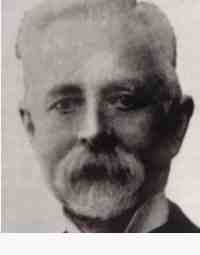 James Bazeley
Petter was born
in Barnstaple,
Devon in 1847,
the son of
John
Petter. His
father moved his
family to Yeovil
around 1865 when
he purchased the
ironmongery
business of
Hannam & Gillet
in the
Borough
(today's
15 High Street) and
was advertised
in the Post
Office Directory
of 1866.
James Bazeley
Petter was born
in Barnstaple,
Devon in 1847,
the son of
John
Petter. His
father moved his
family to Yeovil
around 1865 when
he purchased the
ironmongery
business of
Hannam & Gillet
in the
Borough
(today's
15 High Street) and
was advertised
in the Post
Office Directory
of 1866.
In the autumn of 1870 James married Charlotte Waddams Branscombe of Bristol, the daughter of Henry Branscombe, a rubber merchant, and his wife Elizabeth. His father gave James the ironmongery business as a wedding present although he was advertising the business as "John Petter, Ironmonger" for years to come as seen in an 1878 advertisement from Whitby's Yeovil Almanack Advertiser. In the 1871 census the newly-married James and Charlotte were listed at the ironmongery shop in High Street, and 24-year old James gave his occupation as "Ironmonger employing 11 men and 8 boys". Three shop assistants were living on the premises as well as two general domestic servants.
By 1872 Petter had acquired the Yeovil Foundry and Engineering Works, making agricultural machinery, from William Rowe who was retiring. Petter took the manager, Henry Francis Edgar, known as Frank, as a partner in the business. They advertised their new business in the Somerset & Bristol Directory of 1872 and the advertisement from Whitby's Yeovil Almanack Advertiser of 1878, shown below, testifies to the large range of products and services they offered.
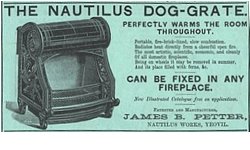 Around
1881 James
designed a
modern and
efficient fire
grate which he
called the
'Nautilus' because
its internal
structure
resembled the
internal
structure of a
Nautilus shell
in which smoke
from the fire
circulated
before being
expelled by
means of a flue.
Several versions
of this
efficient
system,
including a
gas-fired
model, were
designed and
manufactured. He
founded the
Nautilus Stove
Company which
made his fire
grates and
kitchen ranges
at his
Nautilus Grate
Works in
Hendford, next
door to
Ayr
House and
opposite the
Manor Hotel (see
map below). The
building, owned
by
Frederick
Greenham, was
known as 'The
Rink' because it
had originally
been built as a
skating rink. The
site is now
occupied by
Dolphin House.
In 1882 Petter's
Nautilus grate
was exhibited at
the Manchester
Smoke Abatement
Exhibition but
after Queen
Victoria had one
of Petter's
grates installed
at Osborne House
and another at
Balmoral his
grates became
nationally
famous and
demand for them
grew
substantially.
The advert seen
here dates to
1888.
Around
1881 James
designed a
modern and
efficient fire
grate which he
called the
'Nautilus' because
its internal
structure
resembled the
internal
structure of a
Nautilus shell
in which smoke
from the fire
circulated
before being
expelled by
means of a flue.
Several versions
of this
efficient
system,
including a
gas-fired
model, were
designed and
manufactured. He
founded the
Nautilus Stove
Company which
made his fire
grates and
kitchen ranges
at his
Nautilus Grate
Works in
Hendford, next
door to
Ayr
House and
opposite the
Manor Hotel (see
map below). The
building, owned
by
Frederick
Greenham, was
known as 'The
Rink' because it
had originally
been built as a
skating rink. The
site is now
occupied by
Dolphin House.
In 1882 Petter's
Nautilus grate
was exhibited at
the Manchester
Smoke Abatement
Exhibition but
after Queen
Victoria had one
of Petter's
grates installed
at Osborne House
and another at
Balmoral his
grates became
nationally
famous and
demand for them
grew
substantially.
The advert seen
here dates to
1888.
The Nautilus Grate Works proved to be too small to accommodate the ever-increasing production demands of their company. Not only that but in 1889, following the death of Frederick Greenham, the Rink was put up for sale as part of Greenham's extensive land holdings. It was bought by cabinetmaker Henry White for £800 (about £90,000 at today's value).
Petter and Edgar bought the Yeovil Iron and Brass Foundry on the corner or Huish and Clarence Street (now under Tesco's car park) that had belonged to Sansbury & Savery and then William Rowe. A cast iron bollard in Waterloo Lane, photographed below, is (as far as I'm aware) the last surviving evidence in Yeovil from Petter & Edgar's Iron & Brass Foundry.
In 1889 James' partner, Henry Edgar, died in accident and in 1890 his twin sons, Percy and Edmund, left school to start their apprenticeship in their father's ironmongery and foundry business.
In the 1891 census James and Charlotte were living above the ironmongery shop in the Borough (today's 15 High Street) that was sandwiched between William Maynard's grocery cum confectioners and Edmund Damon's outfitters. By this time they had nine of their children living with them (altogether James and Charlotte were to have fifteen children). James listed his occupation as Ironmonger (Master) and the four eldest boys were all ironmongers' apprentices - James JB aged 19, twins Ernest and Percival (known as Percy) aged 17 and Hugh aged 16. The remaining children were all listed as scholars. Also living in was another apprentice as well as a cook, housemaid and nurse.
By 1892 Ernest and Percy had designed and produced a self-propelled oil engine and in 1895 they developed a new engine of one horse-power designed specifically to propel a 'horseless carriage'. They designed the first motor car with an internal combustion engine to be made in the United Kingdom, using a converted four wheel Hill and Boll horse-drawn phaeton and a 3hp Petter horizontal oil engine. The vehicle was constructed at the carriage works of Hill and Boll in Park Road. It weighed 9cwt (457kg), including the 120lb (54kg) of the Petter engine with its flywheel and side bars, and had a top speed of 12 miles per hour. This same year James made Percy the manager of the foundry.
In the late 1890's James and his sons established the Yeovil Motor Car Co Ltd with the intent of manufacturing automobiles. Initially the company produced a small motor carriage for two but eventually twelve different models were designed and produced although sales did not meet the anticipated targets. In 1897 the Petters entered the 'Yeovil Car' for trials at Chelsea organised by The Engineer magazine. However they failed to achieve the commercial success they had hoped for with automobiles and consequently adapted their engines for agricultural and industrial use.
In 1897 he was appointed as a Borough Magistrate.
In the 1901 census James and Charlotte were still living above the shop in the Borough (although they would shortly move to a house in The Park) with their children - Guy, aged 28 and an engine maker; Percival, age 27 an iron founder; Hugh, age 26 an ironmonger; Mary, age 25; Gertrude age 24; Claude, age 20 a glove manufacturer; Evelyn, age 11 and Richard, age 9.
In 1901 Ernest and Percy bought the business from their father following which they reorganised and renamed it as James B Petter & Sons with both the sons as joint managing directors. James retired from business and moved briefly to live in Bristol although he shortly returned to Yeovil to live in his house 'The Grange' in Park Road but died just five years later.
His obituary in the 20 April 1906 edition of 'The Engineer' read "We regret to have to announce the death of Mr JB Petter, which took place at his house, West Park, Yeovil, after a very short illness, on Tuesday, April 17th. Mr Petter was the founder of the firm of James B Petter & Sons, and retired from active management in 1901. He was fifty-nine years of age, a member of several public bodies at Yeovil, and a magistrate for the borough."
Both Petters Way and Petters House are named after the family.
Maps
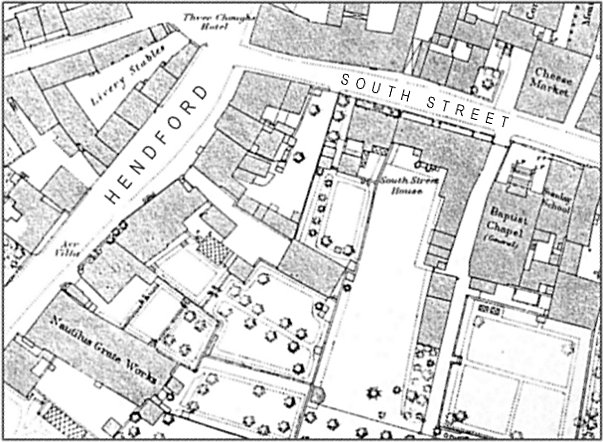
Map based on the 1886 Ordnance Survey showing Petter's first Nautilus Grate Works in Hendford at bottom left.
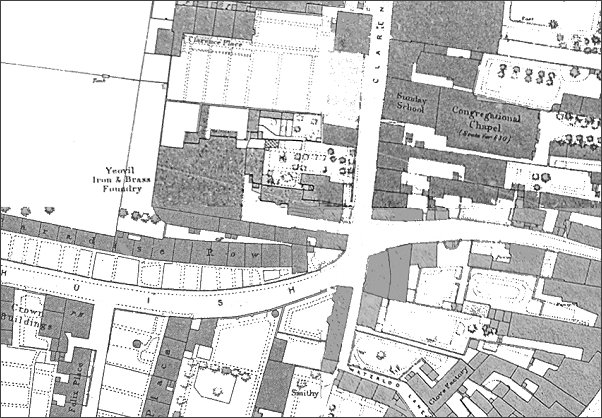
The Yeovil Iron & Brass Foundry on the corner or Huish and Clarence Street (now under Tesco's car park) that had belonged to Sansbury & Savery and then William Rowe.
gallery
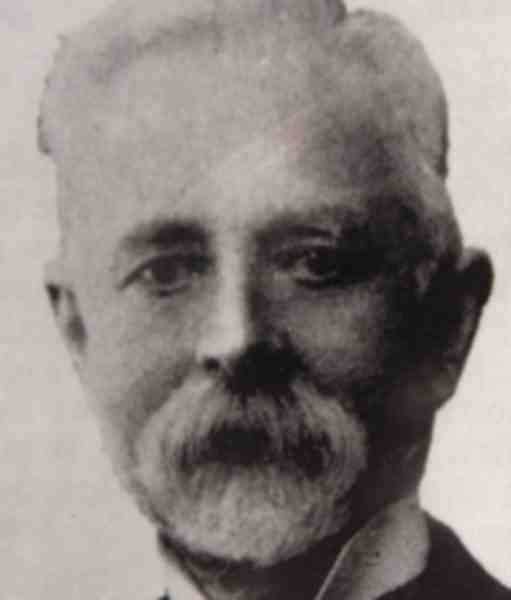
James Bazeley
Petter
1847-1906

James Bazeley Petter with his family. (Back Row) Tilly, John, Percy, Harry, Guy, Claude. (Middle Row) Hugh - added later, Gertrude, James, Charlotte, Mary. (Front Row) Dick, Eva and Ernest.
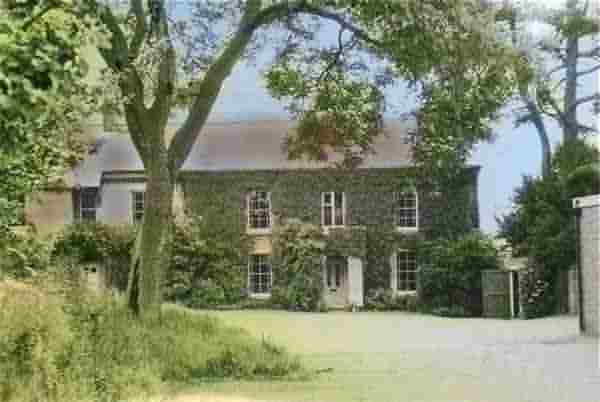
The original photograph
features in my
book 'Yeovil
From Old
Photographs'
A colourised photograph or around 1940, showing James Petter's house, 'The Grange', in The Park which he inherited from his father. The house was demolished in 1975 as part of the Queensway dual carriageway project.
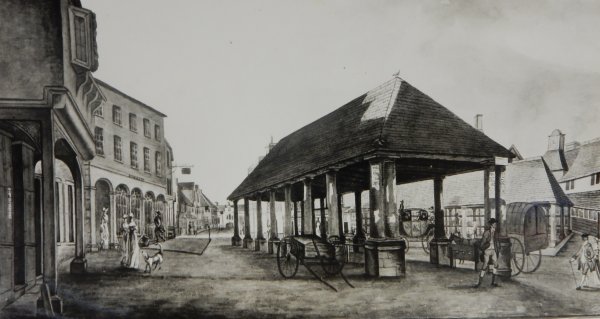
A painting made in 1810 of the Borough looking towards High Street which runs to the distance at left. The building at centre was the Market House, built in 1740, and behind it to the right was the butcher's Shambles, built in 1803. At left, the building with the arched ground floor (built in 1790) is the only building surviving in the Borough today and originally the ironmongery shop of William Edwards, then Josiah Hannam followed by James Bazeley Petter and then Hill & Sawtell. Today it is Superdrug.
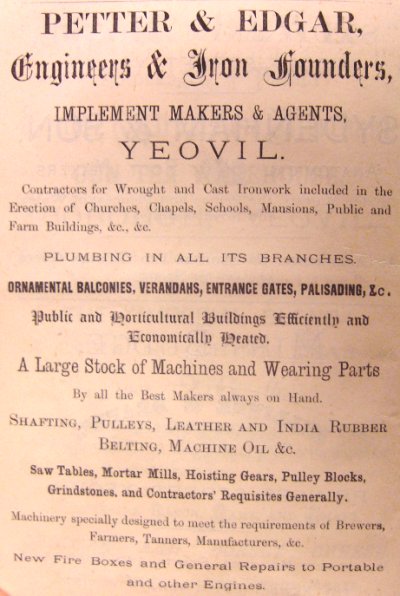
Petter & Edgar's advertisement in the 1878 edition of Whitby's Yeovil Almanack Advertiser extolling their large and diverse range of products and services.
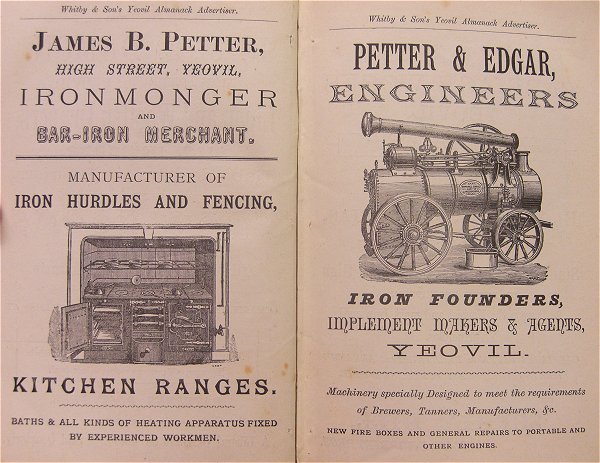
A two-page spread from Whitby's Yeovil Almanack Advertiser of 1883 showing at left an advertisement for Petter's domestic ironmongery business in the Borough and at right his iron foundry and Engineering business in partnership with Henry Edgar.
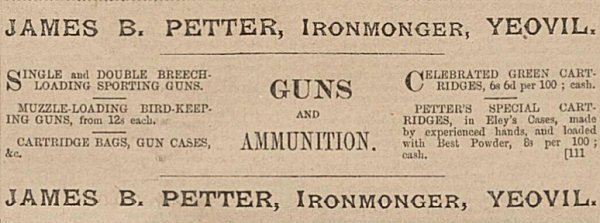
Petter's advertisement, surprisingly for selling guns and ammunition, in the 18 August 1893 edition of the Western Gazette.
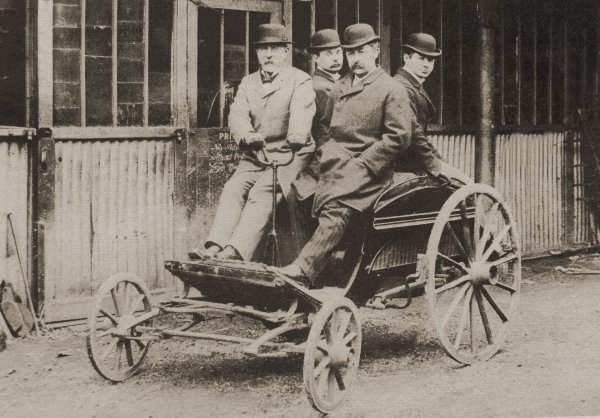
James Bazeley Petter (steering) sitting next to Herbert Southcombe, with twin sons Percy (left) and Ernest (right) in the rear seat, on one of their automobiles in a photograph of about 1897 with coachwork by Hill & Boll. Percy Petter later wrote in his memoirs "In those days the law required that every mechanically propelled vehicle should be proceeded by a man walking with a red flag, and, as the horses were quite unaccustomed to 'Horseless Carriages,' they usually took fright when they saw one coming, and this gave us a lot of trouble."
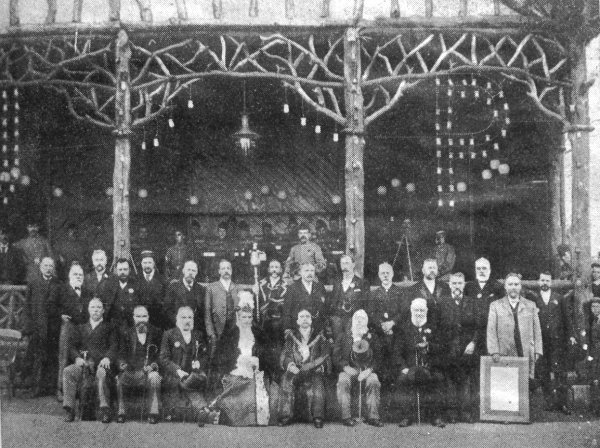
Courtesy of
Olly Ewens
This photograph is from a 1952 newspaper article and was taken on the occasion of the opening of Sidney Gardens in June 1898. The group, photographed with the Mayor, Mr John Vincent, has as its background the thatched bandstand given by James Bazeley Petter to mark the opening. Standing (left to right) are: - E Benson, W Summers, J Kerby Whitby, Mr Brown, William Maynard, GH Gould, Edward Samuel Ewens, Henry Jesty (mace-bearer), William W Johnson, Charles J Hook, James Bazeley Petter (donor), W Armitage (Borough Surveyor), John Howe Farley, Walter J Nosworthy, William Beale Collins, Charles Fox. Sitting - Levi Beer, CW Pittard, Sidney Watts, Mrs Vincent, John Vincent (Mayor), Joseph Chaffey Moore, William Cox.
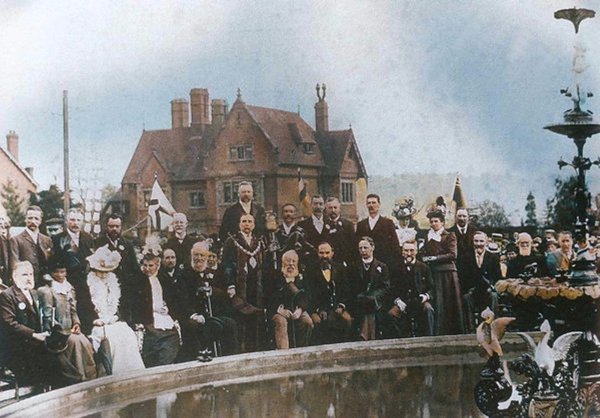
A colourised photograph of the presentation of the Sidney Gardens fountain on 24 May 1899. You'd have thought at least one of 'em could have raised a slight smile. James Petter is No 6 on the sketch below.
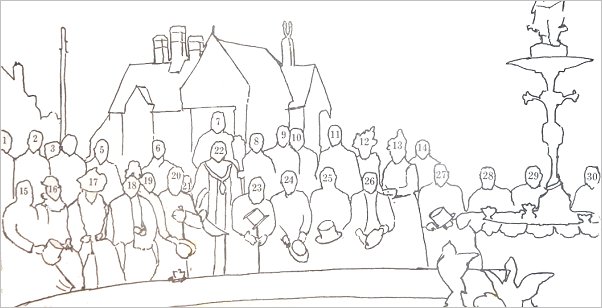
So, who was who?
Unfortunately
only some of the
gathering are
known, these are
as follows -
1 Cllr GH Gould,
2 Cllr
Edward Samuel
Ewens, 4
Cllr WW Johnson,
5 G Gawler, 6
Cllr James
Bazeley Petter,
7 WG Armytage
(Borough
Surveyor),
Henry Jesty
(Mace Bearer), 9
Cllr Charles
Hook, 10 JK
Whitby, 11 Cllr
HF Raymond, 14
William Maynard,
15 Alderman
Sidney Watts,
16 Miss Watts,
17 Miss Vincent,
18 Mrs Vincent,
20 Alderman
William
Cox, 22 Mayor
John Vincent,
23 Alderman
Joseph Chaffey
Moore, 24
Cllr
Charles Wreford
Pittard, 25
Henry Butler
Batten (Town
Clerk), 26 JH
Farley (who
donated the
fountain), 27
Ebenezer Pittard,
29
William Beale Collins.
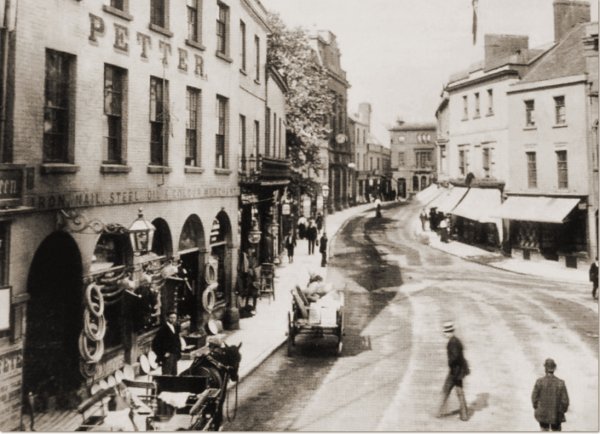
A view of High Street from the Borough probably taken in the 1890's with James' shop at left.
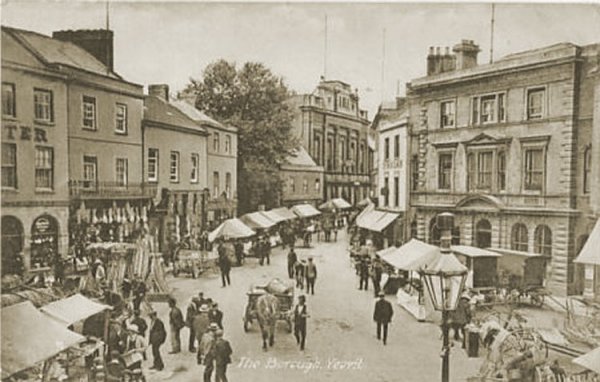
This postcard of the Borough dates to about 1905 and shows Petter's ironmongery shop at extreme left with the family accommodation above.
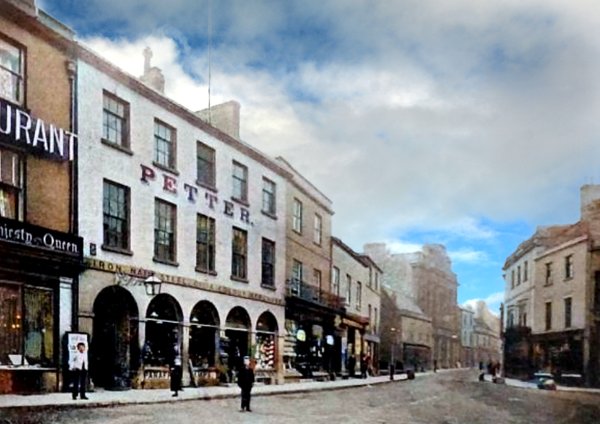
This
colourised photograph
features in my
book 'Yeovil From Old Photographs'.
This photograph was taken by Yeovil Photographer Jarratt Beckett and published in his 1897 book "Somerset viewed through a Camera".
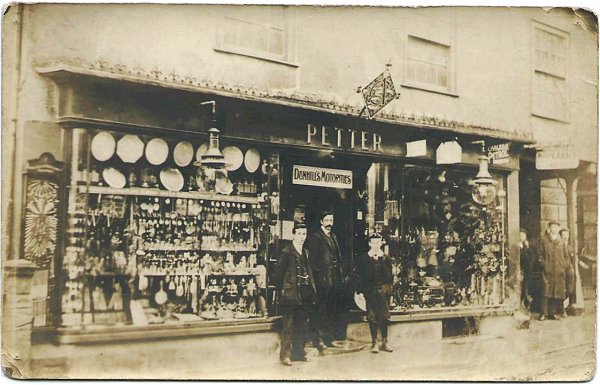
A postcard dated 1905 of Petter's second shop in High Street. The people at right are standing at the entrance to George Court and at extreme right is the first of the arches of the Town Hall.
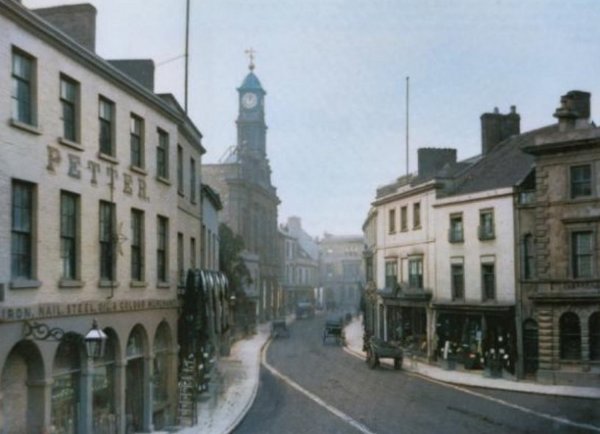
This colourised photograph of High Street dates to about 1914, by which time the Town Hall clock tower had been built. The building at the far end is Stuckey's Bank that predated the present bank building and Petter's ironmongery at left. By this time the ironmongery business was being run by James' son, Hugh. The second shop is just seen between the tree and the Town Hall with a cart parked outside.
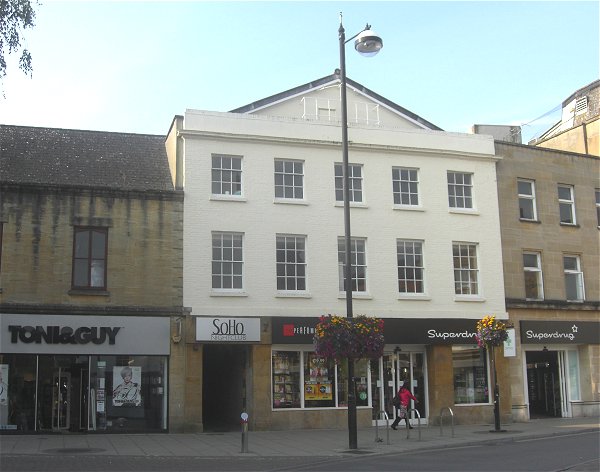
The oldest surviving building in the Borough and originally the ironmongery shop of William Edwards (who built it in 1790), then Josiah Hannam followed by James Bazeley Petter and then Hill & Sawtell. Today it is Superdrug.
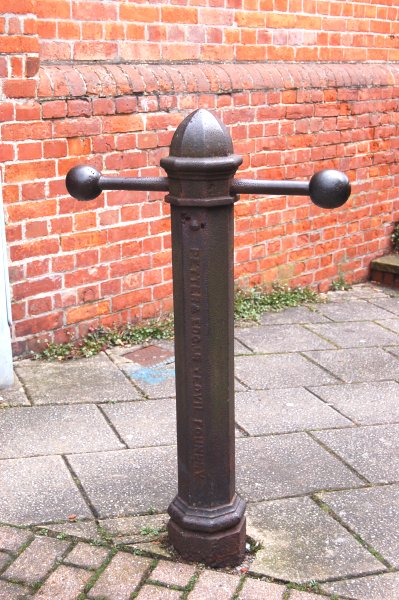
As far as I'm aware, this cast iron bollard in Waterloo Lane is the last one surviving in Yeovil from Petter & Edgar's Iron & Brass Foundry. Photographed in 2013.
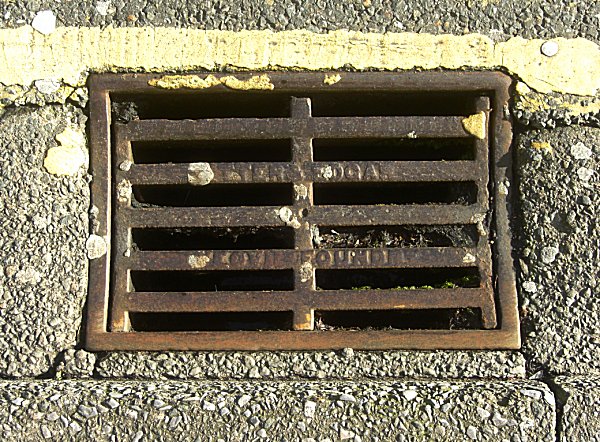
This gully-grating (opposite the Butchers Arms), made at the Petters & Edgar Yeovil Foundry is also a lone survivor. Photographed in 2014.